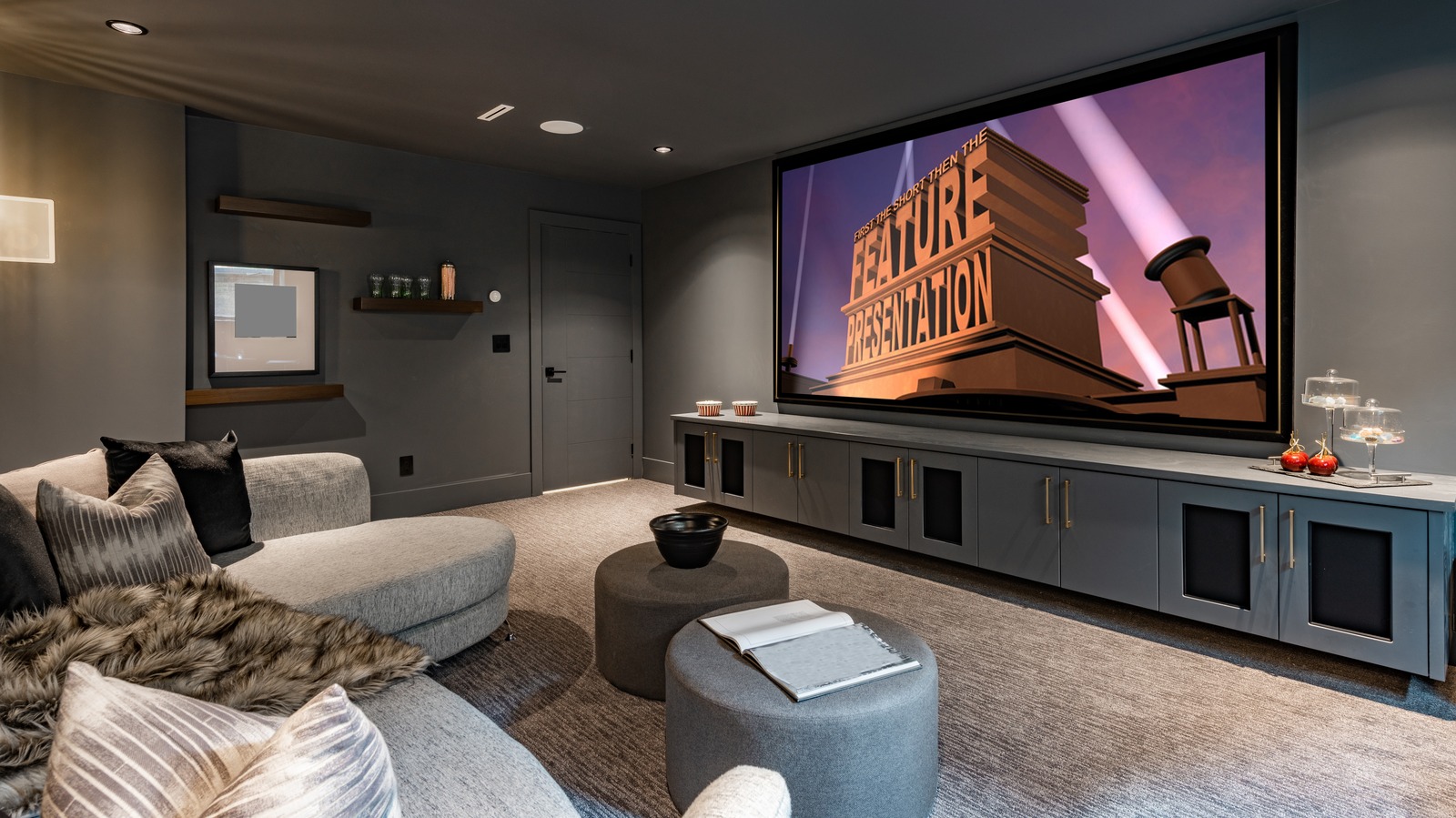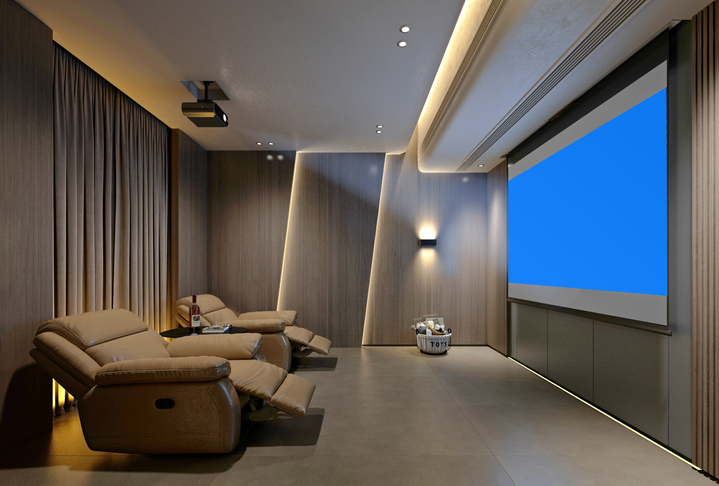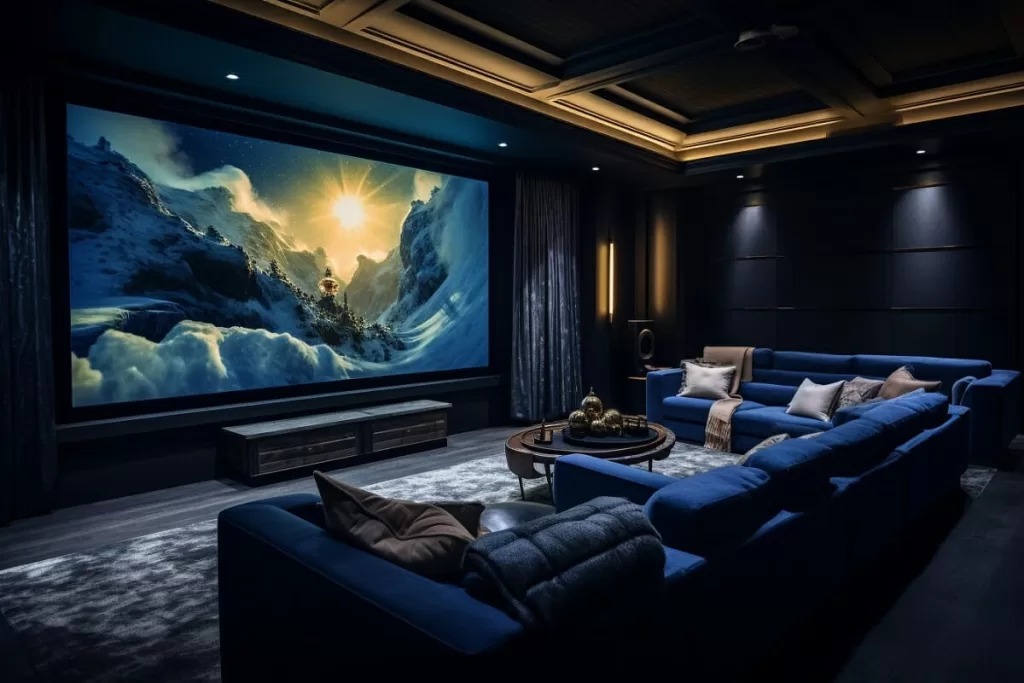How to Locate the Top Home Theater Tampa Installation Services
Home Theater 101: Everything You Need to Know for a Cinematic Experience in your home
Producing a home cinema that equals the motion picture experience of a business theatre entails mindful consideration of multiple components, including display option, sound systems, and space layout. Whether you are pondering the suitable screen dimension or the ins and outs of surround noise, comprehending these basics is important.
Choosing the Right Screen
When establishing a home theater, picking the ideal display can make or damage the seeing experience - home theater installation tampa. The screen serves as the focal point of your arrangement, influencing image quality, checking out angles, and general aesthetic. Secret elements to consider consist of screen resolution, size, and type
First, determine the appropriate screen dimension based upon your space measurements and seating distance. A basic guideline is to rest about 1.5 to 2.5 times the angled screen size for optimal watching. Next, select between various display kinds, such as fixed-frame, mechanized, or retracting screens, each offering distinctive advantages. Fixed-frame screens typically supply the very best photo top quality, while mechanized choices enable adaptability in room usage.
Resolution is an additional important element. For a genuinely immersive experience, take into consideration a screen made for 4K and even 8K material, ensuring sharpness and clarity. Furthermore, take into consideration the display's gain, which influences brightness and comparison; a greater gain can enhance illumination in well-lit areas, while a reduced gain might be preferable for darker environments.
Selecting Audio Equipment
Audio devices is a crucial element of any type of home movie theater system, significantly improving the general viewing experience. The choice of audio equipment can establish the deepness, quality, and immersion of audio, crucial for producing a cinematic environment.
When selecting audio devices, consider a surround stereo, which generally consists of a receiver, multiple speakers, and a subwoofer. A 5.1 or 7.1 channel system is suggested, where the very first number stands for the speakers and the second the subwoofer, supplying an immersive soundscape. The receiver is the heart of the system, handling audio and video signals, and should sustain contemporary styles like Dolby Atmos for an improved spatial experience.
Quality speakers are important; look for models that provide a balanced audio account with excellent bass action. Floor-standing audio speakers can generate richer audio, while shelf choices save room. Additionally, take into consideration cordless options for convenience of installment, although wired systems commonly provide superior performance.

Optimal Seating Plans
Creating a suitable home cinema experience pivots substantially on ideal seating setups. The setup of seats plays an important function in both convenience and watching top quality, straight affecting the general cinematic experience.
First, take into consideration the display dimension and seeing distance. An usual standard is to position seats at a distance roughly 1.5 to 2.5 times the diagonal dimension of the display. This makes certain an immersive experience without stressing the eyes.
Following, elevation is essential. If your seats is in a tiered format, the back rows need to be greater right here than the front to avoid obstructions. For flat seating, make sure that the front row is not as well close to the screen, and that every person has a clear view.
Moreover, consider the arrangement in regards to social characteristics. Group seats can enhance the common experience, while individual seats may be chosen for personal viewing.

Finally, prioritize comfort with ergonomic seating that supports extended viewing durations. Including reclining chairs or supported seats can substantially boost the experience, making the home movie theater a recommended destination for both entertainment and relaxation.
Lighting and Setting
Effective lighting and ambiance are important elements of a properly designed home movie theater, as they considerably affect the watching experience. The ideal illumination can boost the motion picture feel, while inadequate options can interfere with it. For ideal results, consider a layered illumination method that consists of ambient, job, and accent illumination.
Ambient lighting offers basic lighting, making sure that the room is not entirely dark, which can stress the eyes. Dimmer buttons are extremely advised, enabling modifications based upon the material being viewed. Job lighting, such as wall sconces or flooring lamps, offers practical illumination for tasks like analysis or browsing the room without disrupting the general ambience.
Accent lights can be utilized to highlight building functions or develop centerpieces, including deepness and interest to the space. LED strip lights behind displays or along racks can offer a refined radiance that enhances the visual experience without frustrating the visitor.

Wiring and Installation Tips
A tactical electrical my review here wiring arrangement is crucial for achieving optimum performance in your home cinema system. Proper circuitry not just makes sure premium audio and video signals but additionally boosts the total aesthetic of your area. Begin by drawing up your design, determining where each element will be placed, including your display, speakers, and receiver.
When selecting wires, focus on top quality, appropriately determined electrical wiring to minimize signal loss. HDMI cable televisions need to be utilized for video clip links, while audio speaker cable should match the specs of your audio speakers and amplifier. Decide for in-wall rated wires to follow safety criteria and keep a tidy appearance.

Verdict
In recap, developing an extraordinary home cinema experience calls for cautious consideration of numerous aspects, including display option, audio equipment, seating arrangements, lighting, and electrical wiring. Each component plays a critical function in accomplishing optimum performance and setting, inevitably enhancing the enjoyment of home entertainment. By focusing on these elements, a cinematic environment can be successfully reproduced, permitting for immersive seeing experiences that rival typical movie theater setups. Attention to detail in each location is vital for overall contentment.
Producing a home cinema that equals the cinematic experience of a business theater entails cautious factor to consider of several elements, consisting of screen choice, audio systems, and space design.When establishing up a home movie theater, picking the best screen can make or damage the viewing experience. Next off, select between numerous display types, such as fixed-frame, motorized, or retracting displays, each offering distinctive advantages. For a really immersive experience, take into consideration a screen developed for 4K or also 8K material, making sure intensity and clarity.In summary, developing an extraordinary home cinema experience requires mindful consideration of various aspects, including display selection, audio tools, seating setups, lighting, and circuitry.